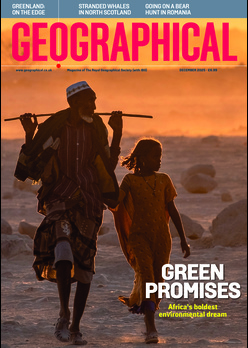
A new study says that a giant cloud of dust from an asteroid impact caused a global winter that wiped out the dinosaurs
By
It’s long been suggested that a giant asteroid, known as Chicxulub, striking the Earth in what is today Mexico, was responsible for the mass extinction event 66 million years ago that led to the wiping out of three-quarters of all life on Earth – including the dinosaurs. But exactly how that asteroid strike killed off the dinosaurs has never been agreed upon.
The most prominent theory was that sulphur from the asteroid’s impact, or soot from massive wildfires around the world, blocked out the sun and sent the world into a dark and cold years-long winter that killed most lifeforms.
Now though, a team of geoscientists led by Cem Berk Senel, from the Royal Observatory of Belgium, challenge this view and say that the real reason was because the asteroid impact caused a vast dust cloud so dense that it blocked out the sun, reduced the planets average temperature by 15 degrees Celsius for up to 15 years and prevented plants from photosynthesising for up to two years. The knock-on effect of this was that many plants died off, which led to the starvation of many herbivorous species, which, in turn, led to the starvation of many carnivorous species.
The team, who have published their findings in the journal Nature Geoscience, came up with these conclusions after studying well-preserved samples of rock from the Tanis fossil site in the US state of North Dakota.
North Dakota is a long way from the crater impact site in Mexico (around 3,000km or 1,865 miles to be precise), but the team discovered that the rock here contained many more small, fine particles of silicate dust – ranging from 0.8 to 8.0 micrometres in diameter than would have been expected.
The team believes that these tiny particles of dust were created as the asteroid made impact and that they were small enough to spend up to 15 years suspended in the air.
This is not actually the first time that such a theory has been promoted. In 1980, father and son scientists Luis and Walter Alvarez suggested that dinosaurs were wiped out after an asteroid strike shrouded the world in dust. But, their theory was largely downplayed until 1990 when the Chicxulub impact crater was identified. Scientists quickly agreed that the impact of the asteroid that created this crater was to blame for the mass extinction of all non-avian dinosaurs, but even then, it was assumed that it was sulfur and not dust, that led to the blocking out of the sun and lowering of temperatures.
Although Senel believes the basics of the mystery is solved, he admits that further information is needed. ‘We need to gain deeper knowledge of what caused the global cooling or the loss of photosynthesis in order to advance our understanding of the exact killing mechanisms that followed the Chicxulub impact’.
Related Articles




